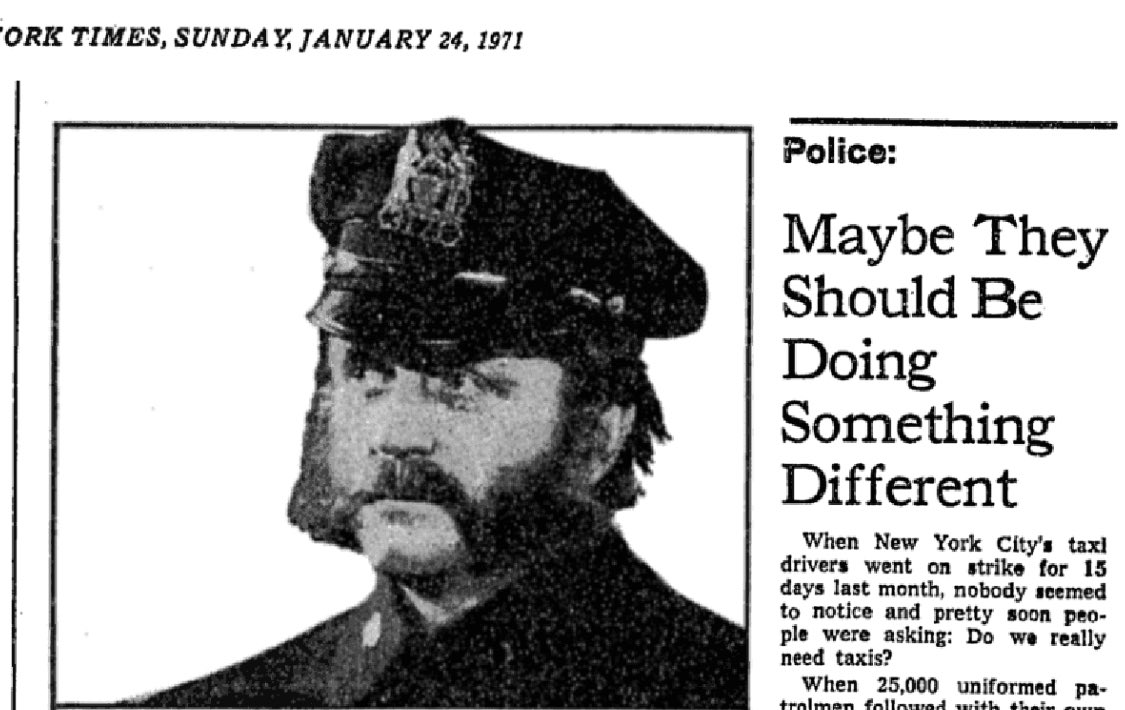In 1971, over 85% of the NYPD effectively went on strike for 5 days. Quoting from the @nytimes, “There was no crime wave, no massive traffic jams, no rioting.” with the article concluding that, “Maybe police should be doing something different.” nytimes.com/1971/01/24/arc… 

The failure of the NYC police strike to disrupt the city stands in stark contrast to when sanitation workers went on strike a few years earlier. Within days the Mayor had to declare a state of emergency. nytimes.com/1967/06/02/arc… 

Just a few days after the strike in NYC, sanitation workers went on strike in Memphis after two workers were crushed to death and the city refused to compensate their families. This strike is what brought Dr. King to Memphis. washingtonpost.com/news/retropoli…
We need to invest heavily in what matters for our cities and towns, like sanitation workers, instead of violent institutions like the police that perpetuate racism and hate. #JuneteenthDay
• • •
Missing some Tweet in this thread? You can try to
force a refresh













